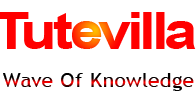Education is the gate to opportunity and a path to economic and social mobility. It can and should be one of the great equalizers of access to the American dream. Rightly so, much attention has been placed on ensuring we increase access, particularly in disadvantaged communities. We applaud efforts to help fund access to learning and to offer on-ramps to education.
And while those efforts should continue, the underlying data shows that much more focus needs to be placed on what happens after these at-risk students enroll. The Pell Institute at the University of Pennsylvania has conducted a multi-year study not just on access, but also on bachelor’s degree attainment. According to the Pell data, if students are from the highest quartile of income, their odds of graduating from college are nearly 60 percent. However, if a student came from the bottom quartile of income, the likelihood of completing college drops to 11 percent.
That means that nearly 90 percent of students from the lowest income quartile do not graduate. This is a moral and ethical crisis for American higher education and it suggests we do not just have an access problem — we have a completion crisis.
BYU-Pathway Worldwide was created to focus on students who do not have access to the traditional higher education system due to cost, fear or other life circumstances. A disproportionate segment of our students come from the lower income quartiles, are first-generation college students and/or face other economic and social barriers to college. And while we must work through these same issues around completion, our students’ six-year graduation rate is above the national average and more than four times higher than similar risk populations described in the Pell data.
Certainly an anchor of our program is its spiritual grounding — we firmly believe that teaching students their divine potential allows them to access heaven’s help in these very difficult transitions. But this same holistic view of the student has also led to additional sources of educational innovation. And while the challenges to at-risk student completion are complex, we would suggest five areas that might help educators and policymakers as they look beyond access and more closely focus on the vexing problem of completion:
5comments on this story
- Shared responsibility: We have a saying at BYU-Pathway that “Retention is everyone’s responsibility.” This includes student support systems, but it also involves everything from student onboarding, to curriculum design, to the ownership and accountability taught to the students themselves.
- Data transparency: When hospitals advertise their ER wait times on billboards, it signals both internally and externally their commitment to patient service. Collegescorecard.ed.gov has done much to make student outcomes more visible. It is available and transparent to the public and should be used more deliberately by governing boards and other stakeholders, including students.
- Measure cost per graduate, not just cost per enrollment: In the world of access, there is much attention given to enrollment growth for focal student populations. These measures are helpful, but they also miss the purpose of entering college in the first place. As we make data increasingly transparent and visible, we should not only look at what it costs per student enrolled, but also what it costs per graduate produced.
- Invest in mentoring at-risk populations: Eric Bettinger at Stanford University has shown that robust mentoring programs for at-risk student populations can increase student persistence on average by 5 percentage points. In fact, mentoring investments have been shown to be more powerful than other forms of intervention, even including financial aid. BYU-Pathway’s mentoring programs have led to an 8-point increase in overall persistence over and above our efforts to provide affordable tuition and access.
- Redesign curriculum structures for at-risk populations: At the very moment students begin to pay for their own schooling (often for the first time in their lives) many traditional universities present them with a curriculum that does not feel relevant to their future career. At BYU-Pathway, we are not anti-general education. In fact, we very much value the critical thinking and communication skills a student develops through this curriculum. But we start every student with a skills-based certificate first, where at-risk students acquire job-ready certificates in their first year of college. These certificates not only make them more immediately valuable, they also stack directly into a degree so no credit is left behind. By moving to a certificate-first approach, we have seen our post-certificate persistence rates jump from just over 65 percent to nearly 90 percent.
Access to higher education remains one of the more important mechanisms to ensure social mobility and shared opportunity across a community, a state and even a church. But as we focus on expanding access, let us not forget completion and overall student success must remain a focus for all of us.

